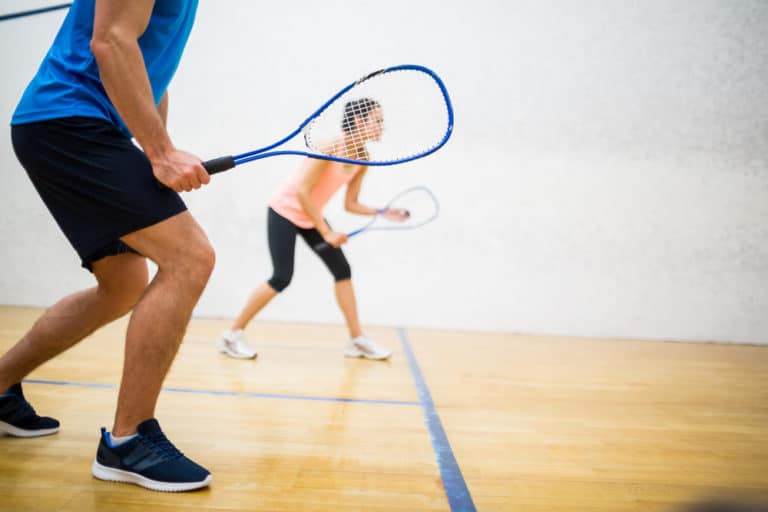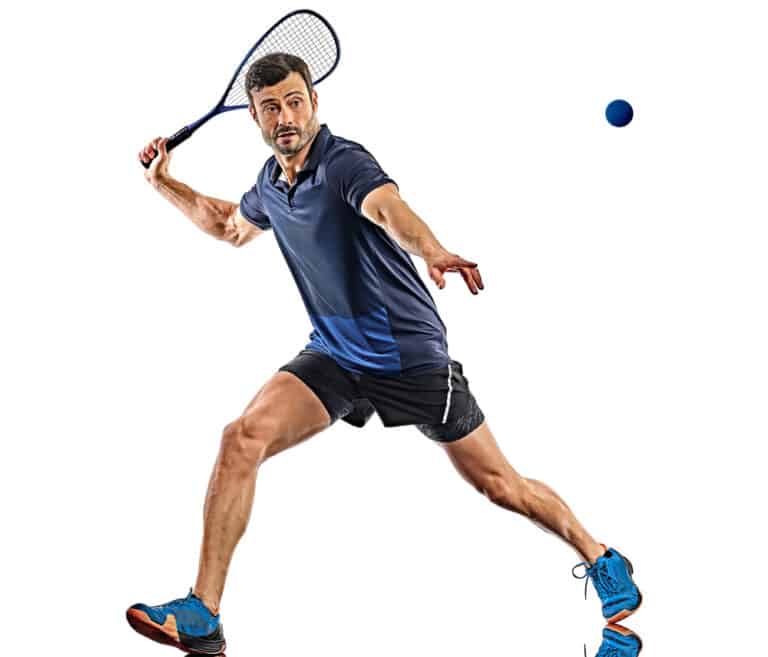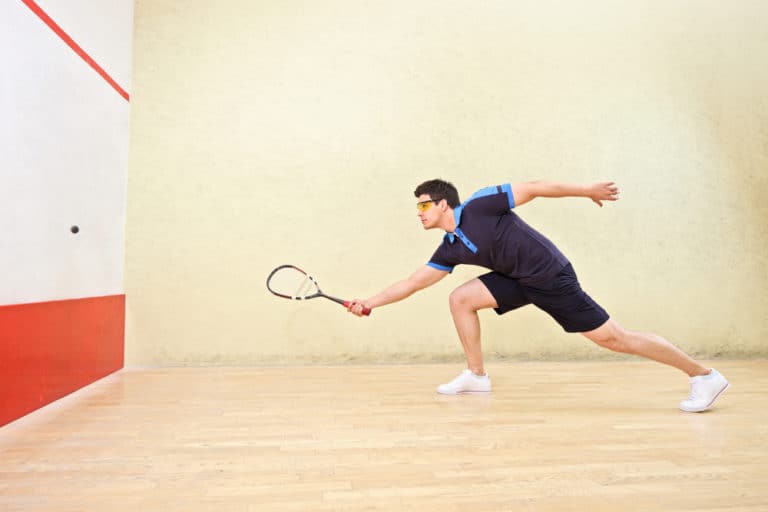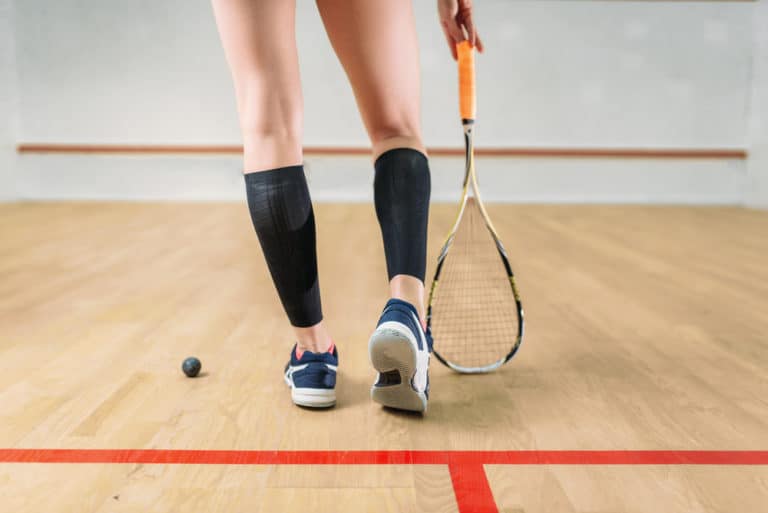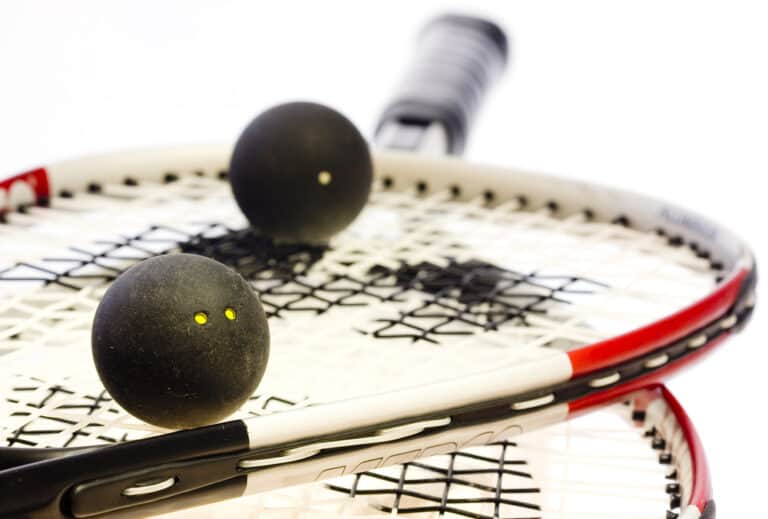What Are The Best Tactics In Squash?
Like many other sports, squash is about the tactics and skill of the players involved; it is not unlike an intense game of chess, where every move could lead to you ultimately winning or losing the game. When you start, you are just learning the basics and trying to grasp how to play, but once you have got that covered, you want to advance your game and kick things up a notch.
The primary manner of dominating a squash game is to use the tactic of controlling the center “T” of the court. You want your opponent running around trying to play shots that you are setting up in a calculated manner. Also, use serves to your advantage and be deceptive if need be.
You can do various things to improve your game and excel and ultimately beat your rivals, but you will need to be smart about how you proceed, and it will take dedication and practice to truly learn the art of being an excellent squash player. So below, to help you understand what you ought to do to take your game to the next level, are a few pointers.
Control The Centre Or “T” In Squash
To truly dominate the game, the best strategy is to control the center of the court or the area usually referred to as the “T”, as the lines on the court form the letter. You want to have your competitor running around the court scrambling to get to the ball while you maintain the majority of the time spent on the “T”.
It offers the most efficient space from which to retrieve the ball if there are tricky shots played against you, as it allows you to move to any part of the court more efficiently. Weaker shots that get played to the front of the court are well within your reach, and shots lobbed to the back of the court are also not an issue for you if you maintain this position.
Once you have played your shot, be sure to recover and make your way back to this position and try to force your opponent from being able to keep hold of this position as they too will want to hold it. The player who can dominate the center of the court is more than likely the one who will win the match, and you will find that the more skilled players are the ones who can do this.
Use The Serve As Part Of Your Tactics In Squash
After the service has been played, the players alternate, taking turns to hit the ball until one of them makes an error. Such as hitting the ball past the out lines or if they are unable to hit the ball before or after the ball’s first bounce. Unlike in a game such as pickleball, either player can win the point, regardless of who served. Once the point has been awarded, that player will serve.
Now, you want to apply pressure on your opponent from the start. One of the best types of service is one where it is a relatively high lob that connects with the sidewall just before being playable for the opponent. This takes practice to master, but with patience, you can easily ensure that you place the ball in a tricky to hit position every time.
Before you serve, consider taking your time to allow yourself time to refocus and decide precisely where you want to place the ball; this is particularly relevant for newer players. If you are an experienced player, you may want to get the serve over as quickly as possible to ensure that your opponent has no time to collect themselves.
Once you have served, ensure you make your way to the center of the court and establish that as your point of play. You may have to move if your competitor is clever enough to play hard-to-reach shots, but then compose yourself and get the center of the court under your control.
Although we did mention a suitable manner of serving, this does not mean that you should not mix things up now and then to keep your competitor on their toes. There are alternatives such as playing the ball so that its trajectory is directly at their body or lands just in front of them at their feet. These are also hard to return shots and will leave your opponent baffled and ruffled.
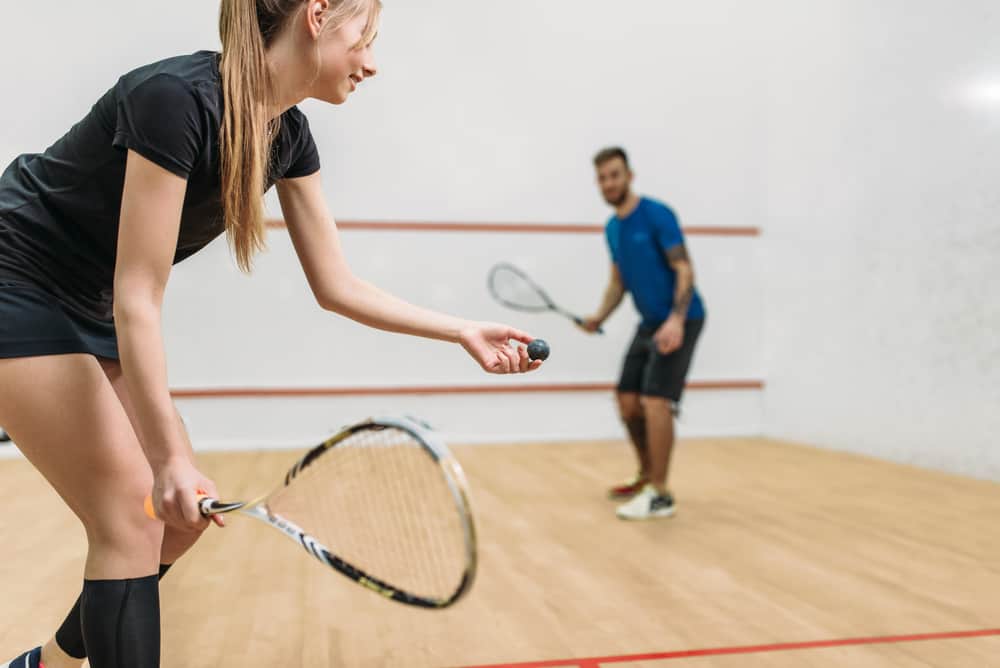
Returning The Serve Is Also Tactical In Squash
If the service is a lob shot, the ideal return would be to volley the ball. The best way to do this is to attack the ball before it makes contact with the wall, or be quick on your toes and get it straight off the wall. If the ball is going to the back of the court, try to catch it earlier rather than later. If need be, allow it to come off the back, but make sure you can hit it hard enough.
Another way to diffuse a lob shot is to hit the ball straight down the wall, and you can do this with both a forehand and backhand shot. You want to force your opponent to have to run cross-court and then allow you to take the center of the court while they are stuck at the back attempting to get the ball to make contact with the front wall again.
You want to aim high on the front wall if you are hitting cross-court so that they get stuck in the back of their side of the court, but aim lower if you intend on keeping it on your side of the court as it will make it nearly impossible for them to get there in time to play the ball.
If the ball is a hard shot and they have played it directly at your body, as we have mentioned, you can do too, then realize that there is plenty of power on the ball already. This means that your primary goal is to get into proper alignment to return the serve and not to worry much about trying to apply any additional force to the ball. Ideally, a soft drop shot to the front is what you want to do with this.
Keep The Ball As Tight As You Can In Squash
Suppose you are returning a serve and playing a drive down the line or in the middle of a rally, attempt to keep the ball hugging the wall as far as possible. This kind of drive, if executed correctly, will drive your opponent insane as it is not an easy shot to return, and the wall will likely interfere with their return or possibly even cause them to break their racket.
If you have received a tight ball yourself, then just keep your racket at 90 degrees to the wall and wait for the opportune moment to hit it, or if there is enough power on it, wait for it to come off the back wall and then play.
How To Handle Loose Balls In Squash
Loose balls can be tricky, but if you are continuously offering up tight shots that are landing deep in the back of the court, your opponent will likely play a loose ball. When this occurs, it can seem complicated, but you can capitalize on it simultaneously. If it is coming from the back of the court, your best bet is to volley drop it to the front so they will be unable to play it.
Suppose they have decided to play a loose ball and are trying to get you to scramble to the front of the court, either counter it with a drop of your own or drive it down the side to the back of the court. In either of these situations, it is a good idea to trick your opponent; if you intend to drive it, fake as if you are going to play a drop shot and then put the power behind the shot, for example.
Conclusion
As we have seen, the ideal tactic to harness and practice is controlling the center of the court and ensuring that your opponent is the one who has to tire themselves out by running around the court attempting to return shots. You can also use serves to your advantage and also never underestimate the power of deception when it comes to the game of squash.
References
- https://www.squashsource.com/squash-rules/
- https://www.squashsource.com/how-to-play-squash/
- https://www.tutorialspoint.com/squash/squash_strategies.htm
- https://www.howicksquash.co.nz/coaching/squash-tips/
- https://squashexpert.co.uk/squash-tactics/
- https://us.humankinetics.com/blogs/excerpt/strategies-for-every-kind-of-squash-opponent
- https://www.myactivesg.com/sports/squash/training-method/develop-your-game/popular-strategies-in-squash


